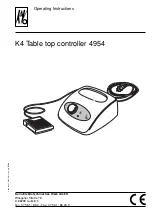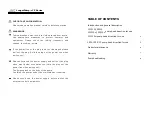
4
In 1991 Léon, now 95 years old, returned to New York where he gave concerts, received awards,
and was reunited with Clara Rockmore. It is not clear that he remembered her. He died in Moscow in
1993, aged 97.
As for his namesake invention, the theremin was just too difficult to play to ever achieve wide-spread
popularity. The performer needed to have a very good sense of relative pitch, if not perfect pitch.
Also, the instrument takes a lot of skill to play in a controlled manner. So besides Rockmore, there
haven’t been many other popular thereminists. But the theremin has never completely gone away. In
fact, it has consistently been at the center of a sub-culture passionate about electronic instruments and
music, where people are not afraid to blur the line between technology and art. One of our personal
heroes, Bob Moog, got his start back in the 1960’s designing and selling theremin kits, before he
revolutionized popular and electronic music with his modular synthesizers. At Zeppelin Design Labs,
with our love of electronic instruments and DIY kits, we hope the Altura will continue Léon Theremin’s
legacy of inspiring both artists and electronics nerds.
HOW IT WORKS
Our MIDI version of Léon’s device uses sonar range finders in place of antennae, and rather than
producing sound directly, the Altura emits discreet packets of digital data that are interpreted by a
separate synthesizer or other sound-making device. The Altura’s right-hand sensor transmits Note-
On messages to play specific notes, thus controlling pitch. The left sensor transmits Channel Volume
data, thus controlling volume. But this is just the start! The left sensor can be set to transmit many MIDI
functions, like pitch bend, modulation, note velocity, and portamento time. The Portamento function
causes one note to glide smoothly to the next, emulating that spooky Theremin sound; but the device is





































